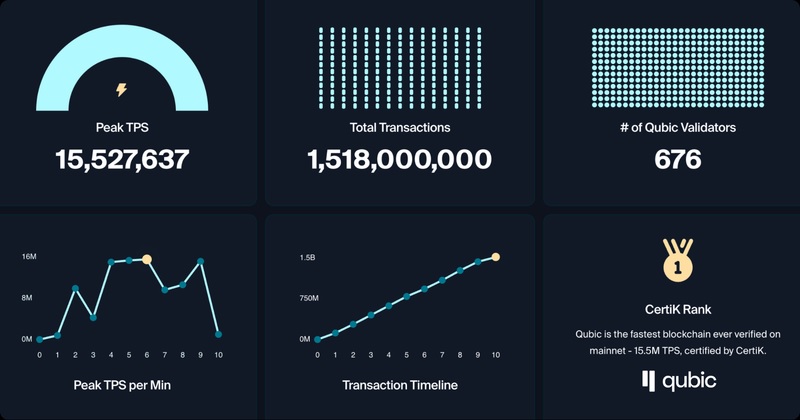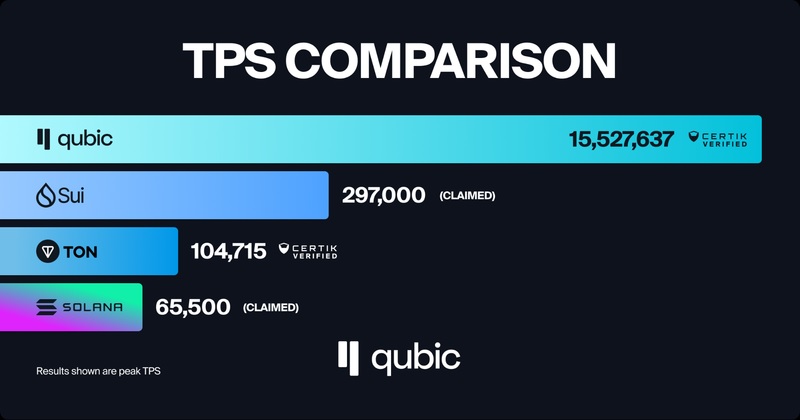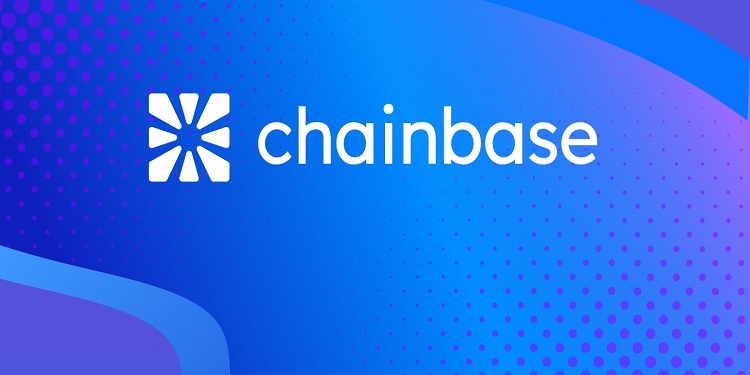Qubic has set a new benchmark in blockchain performance by achieving an unprecedented transaction speed of 15.52 million transactions per second (TPS) on its live Layer 1 mainnet. This performance milestone, which far exceeds the throughput of existing blockchain networks, was independently verified by CertiK, a prominent blockchain security and auditing firm.
Live Mainnet Test Marks a Major Departure from Traditional Methods
Unlike many earlier performance demonstrations that were executed in controlled, simulated environments or testnets, Qubic’s achievement was accomplished on its operational mainnet. The event was particularly notable for its complete absence of rollups, gas fees, or reliance on Layer 2 solutions. The network utilized its native tick-based architecture, which orchestrates consensus, execution, and finality in a synchronized loop, to conduct the stress test.
Qubic’s team reportedly carried out the test in a live environment over an extended duration, during which a large number of ticks—essentially synchronized computational cycles—were executed. CertiK focused its analysis on the 10 peak-performing ticks, where the highest throughput was observed. These ticks produced the headline figure of 15.52 million TPS and a total of 1.518 billion transaction transfers.
Independent Verification and Comparative Metrics
CertiK’s certified results place Qubic far ahead of other high-speed blockchain platforms. For instance, Telegram’s Open Network (TON) reportedly achieved just over 100,000 TPS during a simulated burst test on testnet. Solana, another high-performance blockchain, is known to reach approximately 65,000 TPS under ideal conditions. Other networks such as Sui, Aptos, and Arbitrum reportedly remain under the 1 million TPS threshold.

In contrast, Qubic’s performance not only exceeds these benchmarks by a wide margin but does so on a live mainnet, with zero latency in finality. This means transactions are confirmed instantly, without any delay typically associated with blockchain finalization processes.

More Than Speed: Enabling New Use Cases
While transaction speed often dominates headlines, Qubic’s innovation lies in its architectural design, which is tailored for high-performance computing applications. Its tick-based system facilitates atomic consensus and execution, which opens the door to a range of complex, previously impractical use cases.

These include artificial intelligence operations such as model inference, data pipeline processing, and training; decentralized physical infrastructure networks (DePIN), which involve sensor grids and geospatial data routing; and composable decentralized finance (DeFi), which can benefit from real-time computation and immediate settlement.

Qubic’s developers emphasized that the system is built to handle not just financial transactions but real computational tasks, potentially serving as a backbone for advanced technologies like artificial general intelligence (AGI) and distributed AI systems.
Publicly Auditable Results
To support transparency and public scrutiny, the Qubic team has made all test data accessible. The Qubic Explorer provides on-chain data and logs of tick activity, while a Performance Visualizer offers a graphical representation of the test results. Additionally, CertiK’s full certification report is available for review, outlining the methodology and confirming the network’s performance metrics.
Through this milestone, Qubic appears to have redefined the boundaries of blockchain scalability and real-time computing, establishing a new paradigm for what Layer 1 networks can achieve in both financial and computational contexts.









